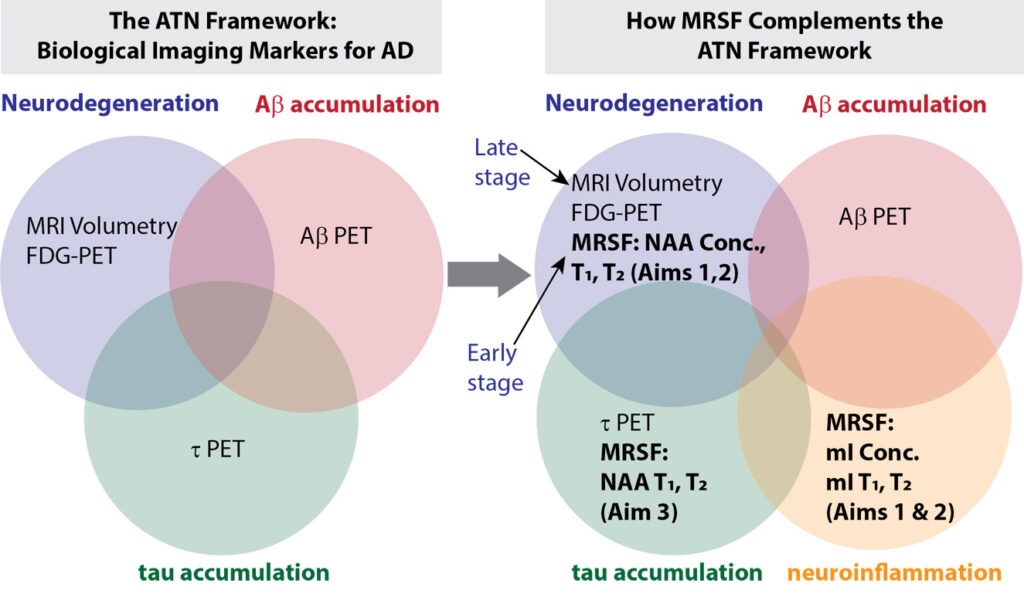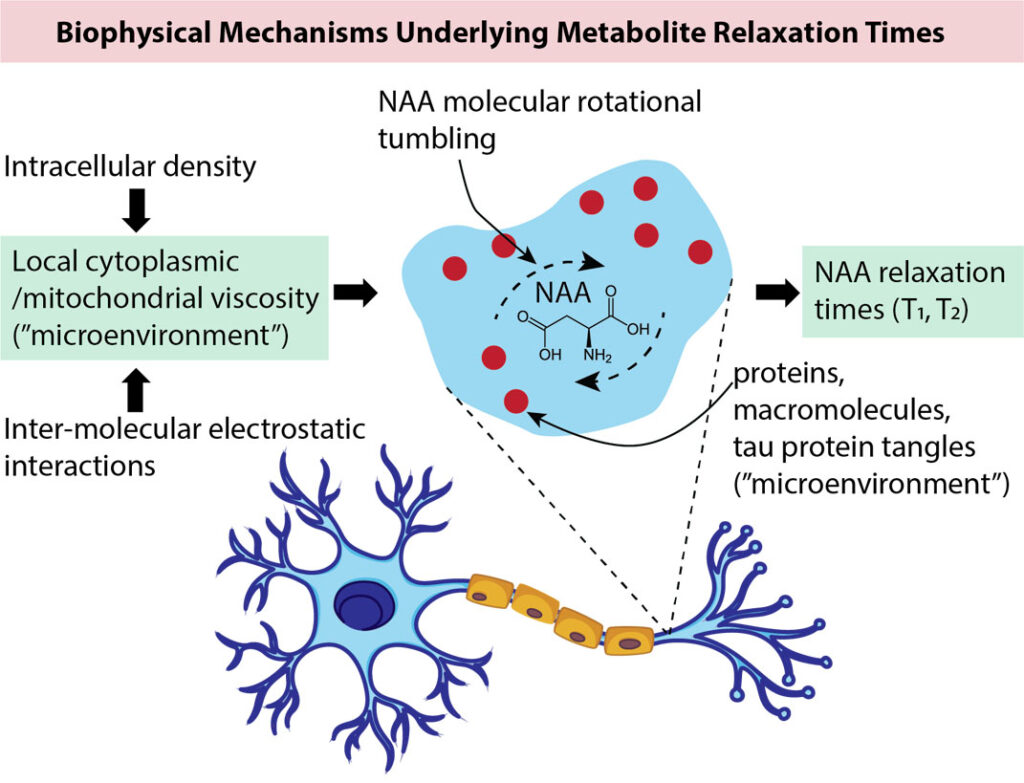Cellular Viscosity as a Marker for Alzheimer’s Disease Pathology: A Combined Multiparametric MR Spectroscopy and PET Study

Overview
In this project we are investigating cellular viscosity as an early marker of neurodegeneration and cognitive decline by combining positron emission tomography (PET) and blood plasma measurements with a novel imaging method called magnetic resonance spectroscopic fingerprinting (MRSF).
There is a need for imaging markers to help prognosticate progression to Alzheimer’s disease, and the pathophysiology of the Alzheimer’s is closely linked to changes in intracellular viscosity, a property fundamental to healthy cellular function. We are using a rapid and robust imaging technique called magnetic resonance spectroscopic fingerprinting (MRSF) to quantify markers reflective of viscosity within neurons and astrocytes in order to understand disease mechanisms and test whether these markers have the potential to improve current methods for assessing AD progression.
This project is a collaboration with the NYU Langone’s Alzheimer’s Disease Research Center (ADRC), through which we are enrolling a cohort well-characterized with PET imaging, plasma markers, and measures of cognitive function. This rich dataset is leveraged in our study to lead to new insights into the longitudinal relationship between MRSF and more established methods for assessing pathophysiology linked to Alzheimer’s. The expected outcome of this work is a set of novel markers for neuronal and astrocytic intracellular viscosity with the potential to aid in early prediction of neurodegeneration and cognitive decline in Alzheimer’s.
Keywords
- MR spectroscopy (MRS)
- Alzheimer’s Disease
Project Team
External Collaborators
- Assaf Tal, PhD (Project Lead) , Tel Aviv University
- Ricardo Osorio, MD, NYU Langone Health
- Judith Goldberg, ScD, NYU Langone Health
- Arjun Masurkar, MD, PhD, NYU Langone Health
Acknowledgements
This project is supported by the National Institute on Aging (NIA) at the National Institute of Health (NIH) by award R01 AG080672.







